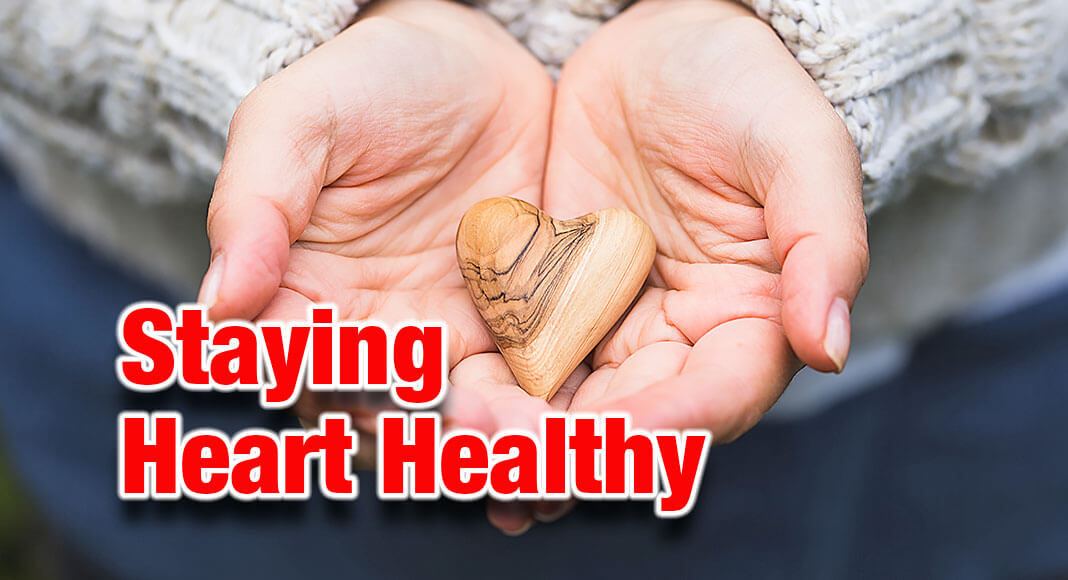
Mega Doctor News
By Terri Malloy
MAYO CLINIC – ROCHESTER, Minn. — February is American Heart Month ― a time to call attention to heart health issues such as heart disease and stroke. Cardiovascular disease is the No. 1 killer of women, causing 1 in 3 deaths each year, according to the American Heart Association. Progress has been made to reduce cardiovascular disease for every age and gender over the past two decades, but the progress has been slower in improving risk factors and death rates in women under 50.
People across America will raise awareness of women’s cardiovascular disease on National Wear Red Day, Friday, Feb. 4. Women can be more proactive about their heart health every day by recognizing the signs of a heart attack, understanding the risk factors and making lifestyle changes that promote overall health.
Consider these three things to know about women’s heart health:
1. Symptoms can differ between men and women.
Heart attack symptoms can vary between men and women. Chest pain is still the No. 1 symptom for heart disease for men and women, but in women it may not be the only or predominant symptom, according to Rekha Mankad, M.D., a cardiologist and director of the Mayo Clinic Women’s Heart Clinic.
“Chest pain is there, but it may not double you over. The pain may be in the jaw, radiate around to the back or go up the neck. A woman might have shortness of breath, might feel sick to her stomach or break out in a sweat,” says Dr. Mankad. “Women experiencing a heart attack may be fatigued and often have an overwhelming feeling of unease ― that something is not right.”
While women should not ignore these symptoms, they often do because they don’t believe they could be having a heart attack. The 2019 American Heart Association National Survey found that awareness of heart disease as the leading cause of death for women dropped from 65% in 2009 to 44% in 2019. Awareness declined most among Hispanic and non-Hispanic Black women, and in younger women ― a group that would benefit most from prevention.
2. Know the risk factors.
The traditional risk factors for heart disease and stroke include age, sex, high blood pressure, diabetes, a concerning cholesterol profile, and smoking or vaping. Dr. Mankad says that while people cannot do anything about growing older, they can address many other risks.
Women are more likely to have high blood pressure as they age, so it is important to watch for changes in blood pressure over time that could put more strain on the heart, arteries and kidneys, and increase the risk of stroke. Women with diabetes and women who smoke are at a higher risk for heart disease than their male counterparts.
A cholesterol profile that is high in low-density lipoproteins, also known as LDL or “bad cholesterol,” and triglycerides, which are fats in the blood, increases the risk of heart disease for both sexes. High cholesterol can lead to fatty deposits in blood vessels that can block blood flow through arteries or even break off and form a clot that causes a heart attack or stroke.
Dr. Mankad also says that women should pay attention to complications such as gestational diabetes, or elevated blood pressure during pregnancy or preterm labor delivery, as these are markers for elevated risk of heart disease later in life. Any of these risk factors should be shared and discussed with a health care professional.
3. Be proactive to prevent heart disease.
The constant demands of work and caregiving in modern life can make women feel like little time is left for anything else. But prioritizing self-care has a ripple effect. Dr. Mankad says she often sees that when women become healthier and take care of their own needs, everyone else in the family gets healthier.
While people may not be able to control every risk factor for cardiovascular disease, the American Heart Association suggests using the guideline of “Life’s Simple 7” to stay on a healthy track. These steps include managing blood pressure, controlling cholesterol, reducing blood sugar, living an active life with daily physical activity, eating a healthy diet, losing weight and stopping smoking.
“Whether it’s being healthy for your family or setting a personal goal, find what motivates you and use it to stay on track,” says Dr. Mankad. “Quitting smoking or stopping vaping is one of the best things you can do for your heart. The most sustainable changes often start small. As little as 10 minutes of walking or activity each day can boost mood and start a healthy habit to build upon. Replacing one processed food with a more nutritious whole grain, fruit or vegetable, and choosing olive oil over hydrogenated oils all have a positive impact on heart health over time.”









